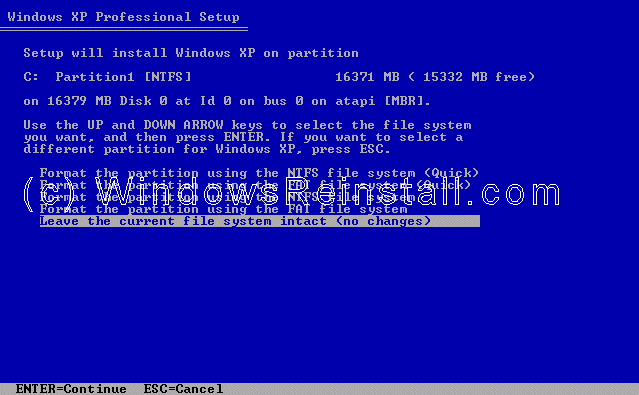


Remember to eject your Windows XP CD before your system tries to boot off of it. To leave the Recovery Console and reboot your computer, type exit and press Enter.When the scan is complete, a report will display.


If you are uncertain what password to enter here, try leaving the line blank and just pressing ENTER. You may have set this password when you first were configuring your computer. This is the password set for the user Administrator. You will be prompted to enter the administrator password.You will enter the Recovery Console and be asked to choose which Windows installation you would like to log into.NOTE: If you are unable to access the recovery console, your CD may be damaged, or the problem could be more severe and require professional system recovery.At the Windows Setup screen, press R to enter the Recovery Console.Your system will load files and bring you to the Windows XP Setup screen. When you see the "Press any key" message, your computer is ready to boot from the Windows XP CD.Choose your CD-Rom drive and press Enter. If you needed to press a key for a boot menu or to select a boot device, you should now have a menu of the devices your computer can try to boot from.ESC (or another key) to select boot device.Look for one of these messages as your computer starts: Many newer computers are set to boot CDs by default or have an option to temporarily change the boot order.The CD-ROM drive and insert the CD before restarting. If yourĬomputer is not booting into Windows, you will still need to have your computer powered on to open Insert your Windows XP CD into your computer's CD-ROM drive and restart your computer.Running CHKDSK from the Windows Desktop.It is recommended you run this scan overnight, or at a time when you won't need to access your computer. Note: Running scan disk can take several hours. It is highly recommended that you upgrade to Windows 10 or 8. No further development will take place on these products and security updates are no longer issued. These products are no longer actively supported by Microsoft. If we are unable to resolve your Windows 9x/2000/XP/Vista issue, you may be able to find help in Microsoft's Knowledge Base. NOTE: Windows 95/98, Windows Me, Windows 2000, Windows XP, and Windows Vista are no longer supported by the Help Desk. Microsoft provides a disk utility, CHKDSK, that can help determine the state of your hard drive. If you cannot boot into Windows (normal or safe mode), it may indicate that the file system on your hard drive, or the hard drive itself, is damaged.


 0 kommentar(er)
0 kommentar(er)
